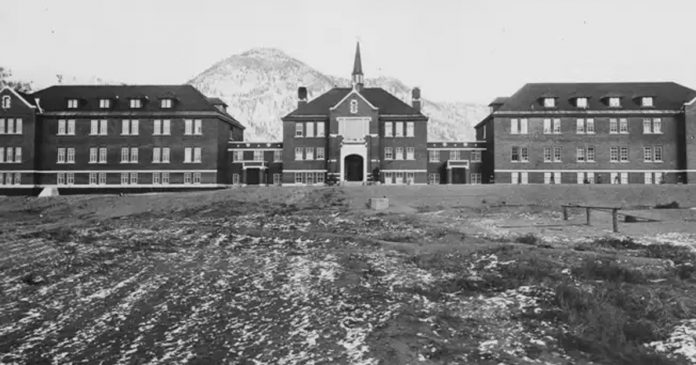The country has been shaken by the apparent gruesome discovery of the remains of 215 children found buried at a former British Columbia residential school.
There is nothing more devastating than the death of a child, and nothing more painful for Canadians than reconciling some of the past horrors of the country’s residential school system and treatment of First Nations more broadly.
The idea that Canada’s official policy was once to remove children from their homes, sometimes forcibly, and send them to government schools is unfathomable and reprehensible.
As a mother and someone who leans libertarian on most issues – particularly when it comes to a parent’s right to raise and educate their own children – this chapter of our history is deeply upsetting.
Canadians almost universally agree that First Nations people were mistreated in the past and deserve reconciliation, and that much work is left to be done to achieve greater levels of freedom and opportunity for those in First Nations communities.
For that to happen though, we must make sure we pay attention to the full picture and full report of what has been found at Tk’emlúps te Secwépemc, also known as the Kamloops Indian Band.
We currently have people in the media invoking the holocaust, saying the discovery equates to genocide, and treating these residential schools as if they were all some kind of a death camp.
But before we accept the very worst accusations against our country, let’s be sure to first look at all the facts.
This tragic story was first made public through a news release from the Tk’emlúps te Secwépemc.
According to the band and its release, “this past weekend, with the help of a ground penetrating radar specialist, the stark truth of the preliminary findings came to light – the confirmation of the remains of 215 children who were students of the Kamloops Indian Residential School.”
The release goes on to say that the band “will continue to work with the ground penetrating radar specialist to complete the survey of the former Kamloops Indian Residential School grounds,” and that the band “expect(s) to complete preliminary findings by mid-June.”
In other words, the survey of the land is not complete – the full report has yet to be released.
An initial CBC report on the story also noted that “the release did not specify the company or individual involved, or how the work was completed.”
In her first public appearance since her bombshell news release, Chief Rosanne Casimir of the Kamloops First Nation confirmed that “this is not a mass grave. These are preliminary findings. We will be sharing the written report in the middle of the month.”
The National Post interviewed anthropology professor Kisha Supernant, from the University of Alberta, who is also the director of the Institute of Prairie and Indigenous Archeology, about the ground penetrating radar technology that was used.
“It doesn’t actually see bodies. It’s not like an X-ray,” explained Supernant. “What it actually does is it looks for the shaft.”
This suggests there are still more questions left to be answered. This also doesn’t tell us anything about the cause of death of those buried. Many people are saying this was murder, but it seems more evidence is required.
This school was in operation from 1890 to 1969 and at the beginning of that period the infant mortality rate in Canada was 27%. Nearly one in three children died before their fifth birthday because of communicable diseases, namely tuberculosis and influenza.
None of this is to say that the treatment of many aboriginal children in many schools in that time was not abhorrent. It was, and there are rightfully legitimate concerns and valid feelings of anger and regret over these latest findings.
But before politicians jump to enacting policy conclusions, we should wait for the official report to be released.
